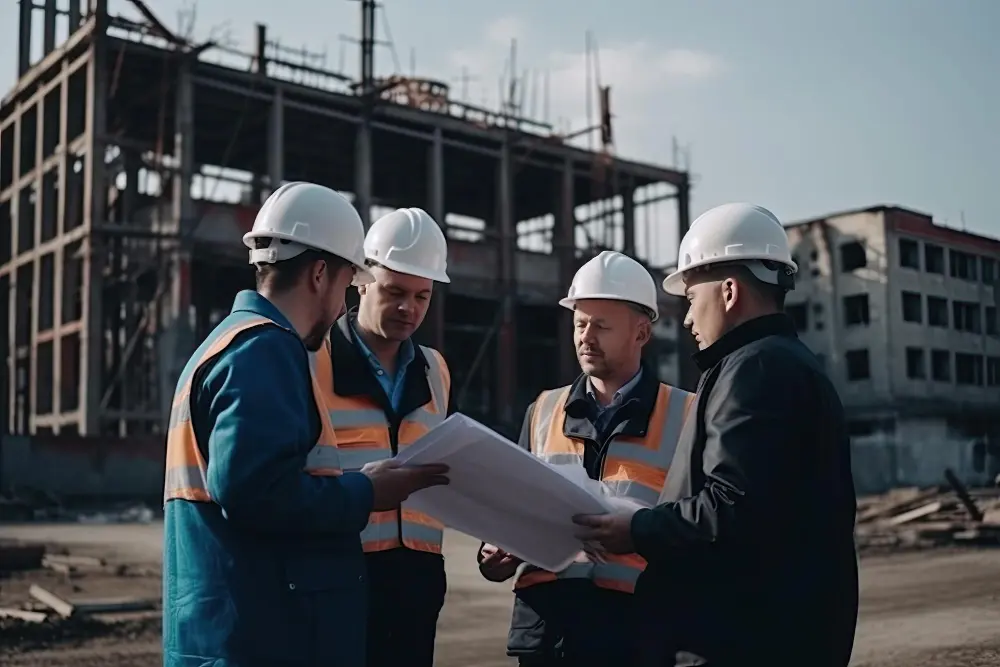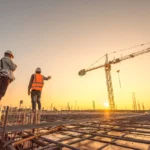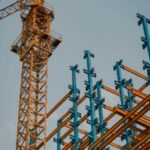Introduction
Project management is the backbone of successful construction projects. In an industry where timelines, budgets, and quality are paramount, effective project management ensures that all aspects of a project are meticulously planned, executed, and monitored. The evolution of project management techniques, from traditional to modern methods, has significantly impacted the construction industry, leading to more efficient and successful project outcomes.
The Role of Project Management in Construction
Definition and Significance
Project management in construction involves planning, coordinating, and overseeing the execution of a construction project from start to finish. It ensures that projects are completed on time, within budget, and to the desired quality standards. A project manager is the linchpin in this process, responsible for aligning the efforts of all team members and stakeholders towards common goals.
Key Responsibilities of a Project Manager
A project manager in construction wears many hats. They are responsible for defining project scope, creating detailed plans, scheduling tasks, managing resources, and overseeing quality control. Additionally, they must communicate effectively with all stakeholders, from clients and contractors to suppliers and regulatory bodies, ensuring that everyone is on the same page.
Project Planning and Scheduling
Importance of Planning and Scheduling
Effective planning and scheduling are the cornerstones of successful construction project management. A well-thought-out plan provides a roadmap for the project, outlining each phase and the resources required. Scheduling ensures that tasks are completed in the correct sequence, avoiding delays and cost overruns.
Techniques for Effective Planning
Several techniques can enhance project planning:
- Work Breakdown Structure (WBS): This technique involves breaking down the project into smaller, manageable components, making it easier to plan and allocate resources.
- Critical Path Method (CPM): CPM identifies the longest sequence of tasks that must be completed on time for the project to meet its deadline, helping project managers prioritize critical activities.
- PERT (Program Evaluation Review Technique): PERT involves estimating the minimum, maximum, and most likely durations for each task, allowing for better risk management and scheduling.
Tools for Scheduling and Tracking
Modern project management relies heavily on technology. Tools like Microsoft Project, Primavera, and Asana help project managers create detailed schedules, assign tasks, and track progress. These tools provide real-time updates, making it easier to identify potential issues and adjust plans accordingly.
Resource Management
Types of Resources in Construction
Resources in construction encompass a wide range of elements, including labor, materials, equipment, and finances. Effective resource management ensures that these resources are available when needed and used efficiently.
Strategies for Resource Allocation
Resource allocation involves assigning the right resources to the right tasks at the right time. Strategies include:
- Resource leveling: Adjusting the project schedule to prevent overallocation of resources.
- Resource smoothing: Ensuring that resources are used evenly throughout the project, avoiding peaks and troughs in demand.
- Just-in-time delivery: Coordinating the delivery of materials and equipment to arrive exactly when needed, reducing storage costs and minimizing waste.
Managing Human Resources Effectively
Human resources are a critical component of any construction project. Effective management involves recruiting skilled workers, providing necessary training, and ensuring a safe and motivating work environment. Communication and teamwork are vital, as they ensure that everyone understands their roles and responsibilities.
Risk Management in Construction Projects
Identifying Potential Risks
Risk management is crucial in construction, where unexpected issues can derail projects. Identifying potential risks involves analyzing all aspects of the project, from design and planning to execution and completion. Common risks include budget overruns, schedule delays, safety incidents, and regulatory compliance issues.
Strategies for Risk Mitigation
Effective risk management involves several strategies:
- Risk assessment: Evaluating the likelihood and impact of identified risks.
- Risk avoidance: Changing project plans to eliminate risks where possible.
- Risk reduction: Implementing measures to reduce the impact or likelihood of risks.
- Risk transfer: Using contracts and insurance to transfer risk to other parties.
Case Studies of Successful Risk Management
Successful construction projects often highlight effective risk management. For instance, the construction of the Burj Khalifa involved extensive risk assessments and mitigation strategies, from foundation design to resource allocation, ensuring that the project stayed on track and within budget.
Quality Control and Assurance
Importance of Quality Control
Quality control ensures that construction projects meet specified standards and client expectations. It involves regular inspections, testing, and verification of materials and workmanship throughout the project.
Techniques for Ensuring Quality
Several techniques are used to ensure quality in construction:
- Inspections: Regular on-site inspections to verify that work meets project specifications and standards.
- Testing: Conducting tests on materials and completed work to ensure compliance with quality requirements.
- Audits: Periodic audits to review project processes and identify areas for improvement.
Mega Diamond’s Approach to Quality Assurance
At Mega Diamond, quality assurance is a top priority. Our projects undergo rigorous inspections and testing at every stage. We use advanced quality control tools and techniques to ensure that our work meets the highest standards. Our commitment to quality is reflected in our numerous successful projects and satisfied clients.
Communication and Collaboration
Importance of Effective Communication
Effective communication is vital in construction project management. It ensures that all stakeholders are informed and engaged, reducing misunderstandings and conflicts. Clear and consistent communication helps keep projects on track and within budget.
Tools for Enhancing Collaboration
Several tools can enhance communication and collaboration in construction projects:
- Project Management Software: Tools like Procore and Buildertrend offer communication features that allow team members to share updates, documents, and progress reports.
- Collaboration Platforms: Platforms like Slack and Microsoft Teams facilitate real-time communication and file sharing, making it easier for teams to collaborate.
- BIM (Building Information Modeling): BIM provides a shared digital representation of the project, enabling better coordination and collaboration among all stakeholders.
Best Practices for Stakeholder Communication
Effective stakeholder communication involves:
- Regular Updates: Providing frequent updates on project progress and changes.
- Clear Documentation: Maintaining clear and detailed project documentation.
- Open Channels: Keeping communication channels open and accessible to all stakeholders.
Conclusion
In conclusion, mastering project management in construction involves a combination of effective planning, resource management, risk mitigation, quality control, and communication. By leveraging modern techniques and tools, construction projects can achieve greater efficiency, quality, and success. Mega Diamond General Contracting LLC exemplifies this approach, delivering high-quality construction projects that meet and exceed client expectations.
FAQs
What are the key responsibilities of a project manager in construction?
A project manager in construction is responsible for planning, coordinating, and overseeing the execution of a project. They define project scope, create detailed plans, schedule tasks, manage resources, ensure quality control, and communicate with stakeholders.
How does effective project management benefit construction projects?
Effective project management ensures that construction projects are completed on time, within budget, and to the desired quality standards. It enhances efficiency, reduces risks, and improves overall project outcomes.
What are the best tools for project planning and scheduling?
Some of the best tools for project planning and scheduling include Microsoft Project, Primavera, Asana, and Procore. These tools help create detailed schedules, assign tasks, and track progress in real-time.
How can construction projects manage risks effectively?
Construction projects can manage risks effectively by identifying potential risks, assessing their likelihood and impact, and implementing strategies for risk mitigation. Techniques include risk avoidance, risk reduction, and risk transfer through contracts and insurance.
What are the key elements of quality control in construction?
Key elements of quality control in construction include regular inspections, testing of materials and workmanship, and periodic audits. These ensure that projects meet specified standards and client expectations.












